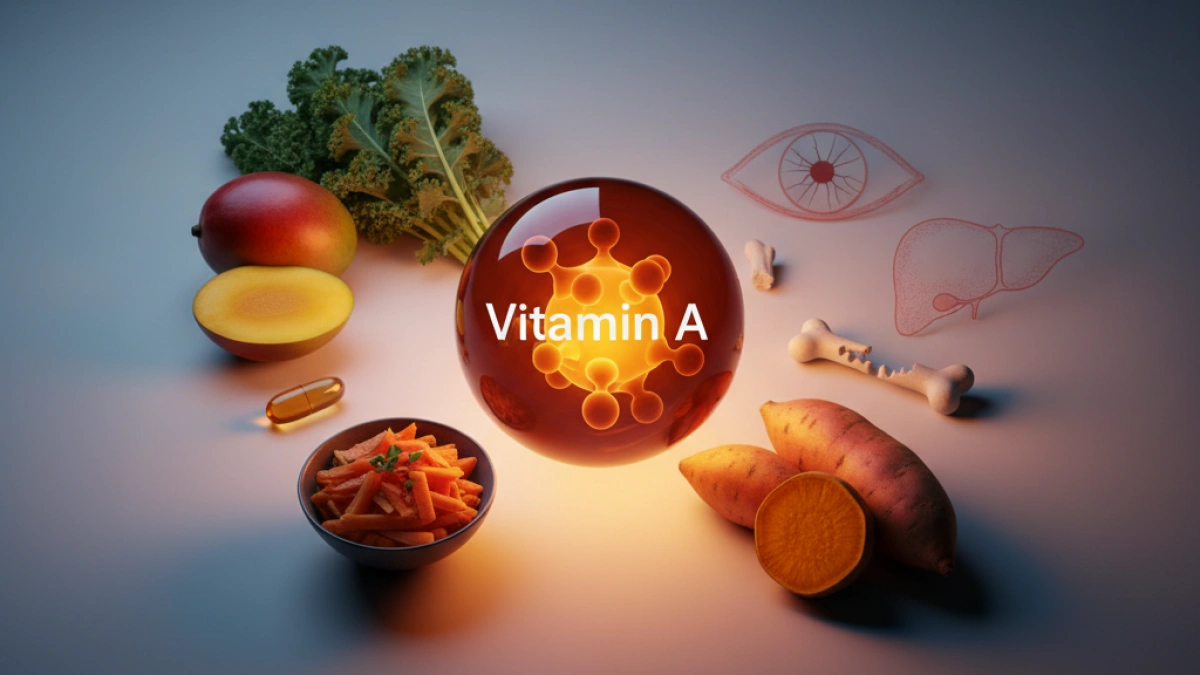Benefits, sources, and risks of vitamin A for health

Vitamin A is an essential nutrient that plays a crucial role in various functions of the human body, such as vision, immune function, and skin health. Below, we will explore the benefits, sources, and risks associated with vitamin A consumption, information that will help you better understand this important nutrient.
Benefits of Vitamin A
Vitamin A comes in two main forms: retinol, which is found in animal products, and carotenoids, which are found in plant foods. Both forms are beneficial for the body, and here are some of their most notable benefits:
Vision Improvement
One of the most well-known benefits of vitamin A is its ability to improve vision. This nutrient is essential for the production of rhodopsin, an eye pigment that helps vision in low-light conditions. A deficiency in vitamin A can lead to visual problems such as night blindness.
Immune System Strengthening
Vitamin A also plays a crucial role in the immune system, helping to maintain the integrity of epithelial cells, which act as barriers against pathogens. Additionally, it contributes to the production and activity of lymphocytes, which are fundamental to the immune response.
Read also
Skin Health
Another important benefit of vitamin A is its ability to enhance skin health. It aids in cell regeneration and collagen production, which can lead to healthier skin and a reduction in wrinkles and other signs of aging.
Sources of Vitamin A
Including sufficient sources of vitamin A in the diet is essential to ensure that the body receives this important nutrient. Here are some of the best sources:
Animal-Based Foods
Foods rich in retinol are the most direct sources of vitamin A. Some examples include:
Read also
- Liver (beef, chicken, or fish)
- Dairy products (milk, cheese, yogurt)
- Eggs
Plant-Based Foods
Carotenoids, which the body converts into vitamin A, are found in various colorful fruits and vegetables. Some options include:
- Carrots
- Sweet potatoes
- Spinach
- Red peppers
- Mangoes
Consuming a variety of these foods can help maintain optimal levels of vitamin A in the body.
Risks of Vitamin A
While vitamin A is essential for health, it's important to note that excessive consumption can lead to adverse effects. Here are some risks associated with hypervitaminosis A:
Excess Vitamin A
Excessive intake of vitamin A, especially from supplements, can lead to toxicity. Symptoms may include:
- Nausea
- Vomiting
- Dizziness
- Loss of appetite
- Fatigue
Interaction with Medications
Vitamin A can also interact with certain medications, potentially reducing their effectiveness or increasing the risk of side effects. It's crucial to consult a healthcare professional before starting any supplements.
Conclusion
In summary, vitamin A is an essential component of our diet, crucial for vision, immune function, and skin health. However, it is vital to balance its consumption and avoid excessive intake. To obtain vitamin A, it is advisable to focus on natural sources through a varied diet rich in fruits and vegetables.
If you want to learn more news and information related to health and well-being, I invite you to explore more articles on my blog. Your well-being is important!











































